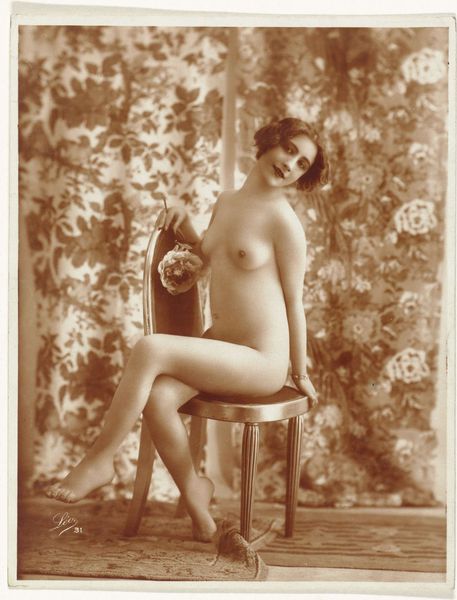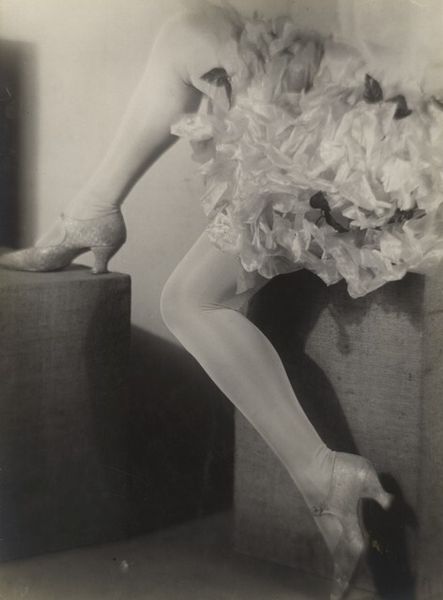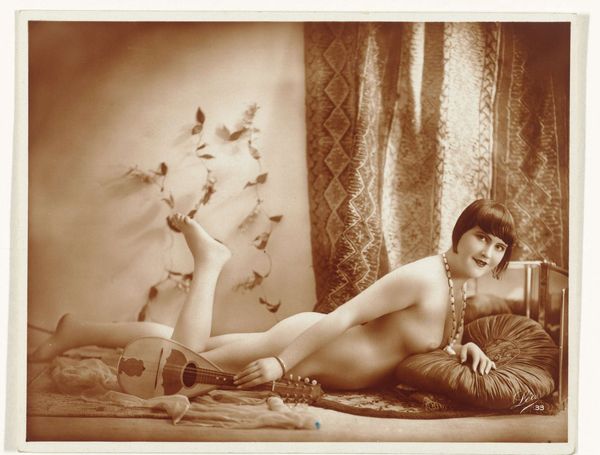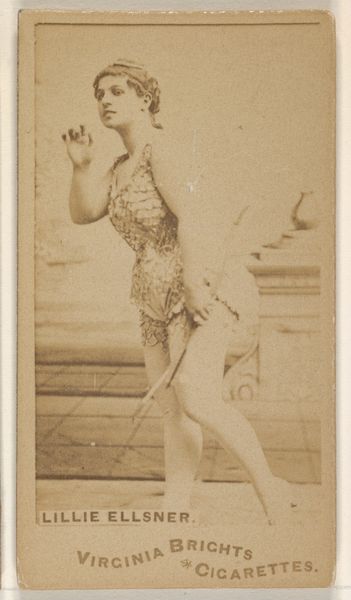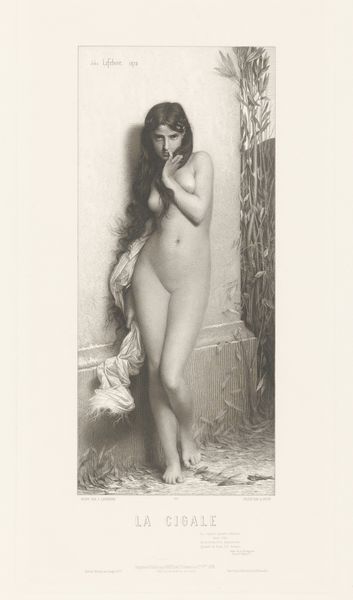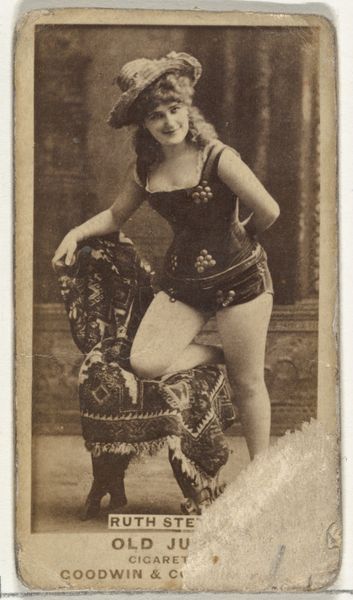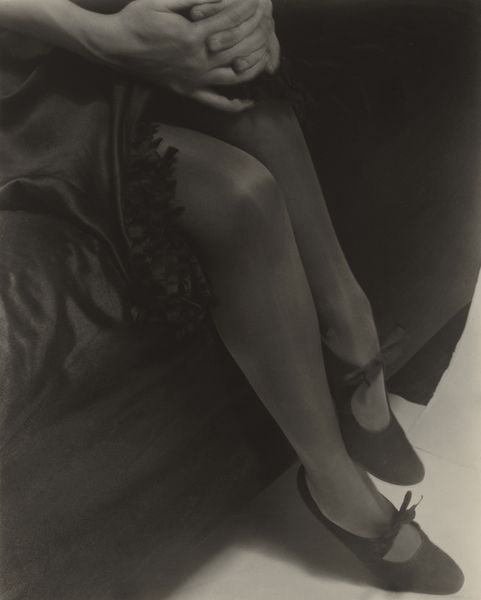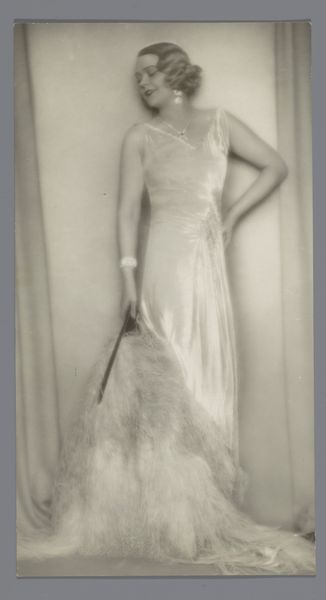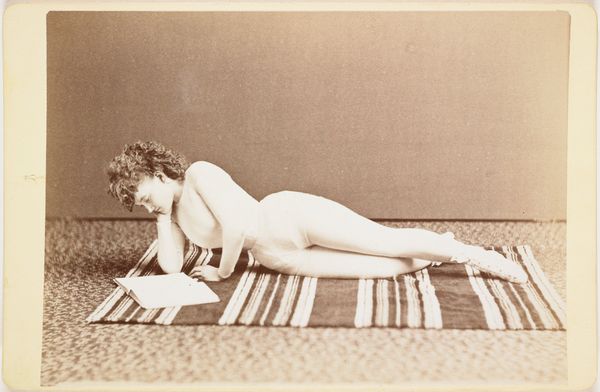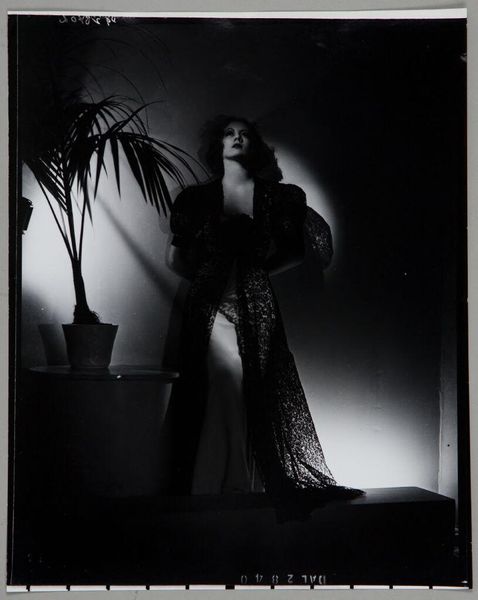
photography
#
portrait
#
film photography
#
pictorialism
#
photography
#
nude
#
erotic-art
Dimensions: height 226 mm, width 179 mm
Copyright: Rijks Museum: Open Domain
Editor: Let’s take a moment with "Standing Female Nude," a photograph, believed to have been taken sometime between 1900 and 1920 by Léo. It's… intriguing. The sepia tone gives it a vintage feel, and the subject's pose is both classical and a bit cheeky with that mandolin. How do you interpret this work? Curator: Cheeky is one word for it! It also strikes me as…almost performative. She's very aware of being seen, isn't she? There's this interplay between vulnerability and deliberate presentation – the soft focus of Pictorialism enhances that dreamlike quality, yet there she is, direct and confident. Editor: Performative... that makes sense. And is Pictorialism why it looks so painterly, almost like a faded dream? Curator: Exactly! Pictorialists used photography to emulate painting; blurring details, manipulating tones, pursuing an artistic ideal rather than strict realism. It makes me wonder about Léo's intentions. Was this about objectification or empowerment? The mandolin… is it simply a prop, or does it represent artistic expression and the female gaze in control? Editor: Wow, I hadn’t considered the mandolin could be symbolic beyond just decor. Does the background contribute? It almost looks like theatrical drapery. Curator: Yes, definitely! The curtains amplify that stage-like setting and heighten the drama, don't they? Think of it as a tableau vivant, a living picture that encapsulates artifice, sensuality, and, perhaps, even societal commentary depending on who was meant to see it. And how *they* were meant to feel. Editor: So much to consider. I'll never look at a vintage photo the same way! Curator: Precisely. A seemingly simple photograph can whisper complex stories. I'm starting to imagine a whole bohemian narrative just looking at this image...perhaps that's where art truly thrives, right?
Comments
No comments
Be the first to comment and join the conversation on the ultimate creative platform.
